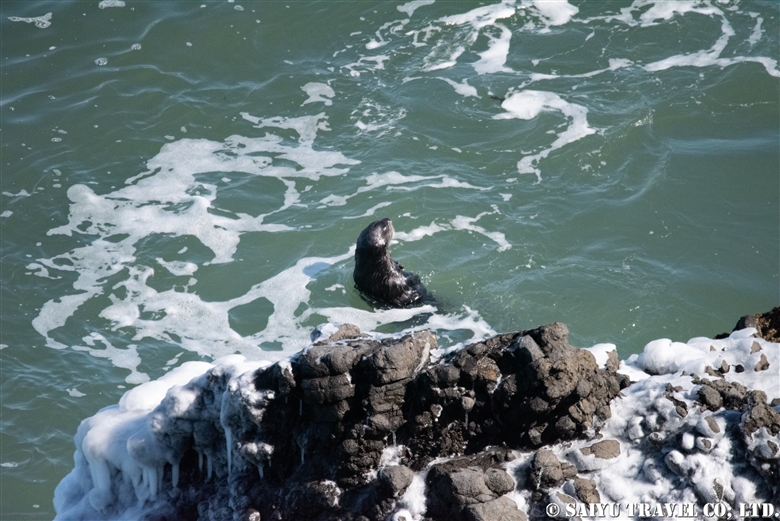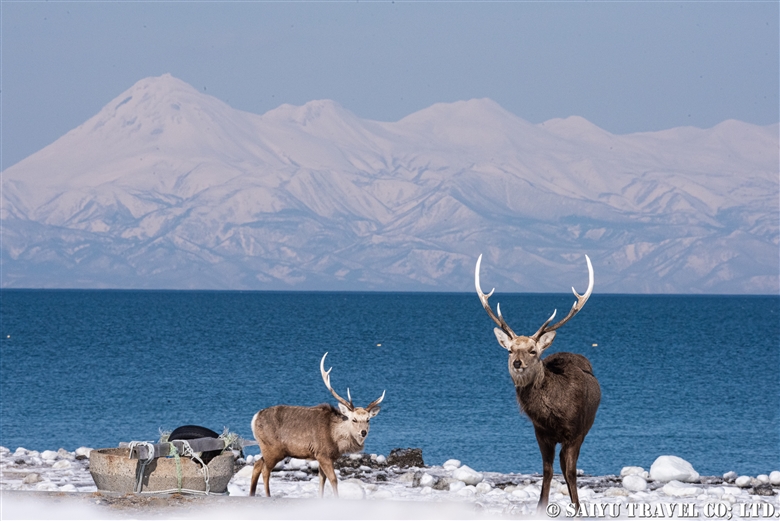
The Notsuke Peninsula in the winter has many charms.
One of them was an encounter with the Ezo sika deer, Cervus nippon yesoensis. In the winter, the heavy snowfall causes the deer to face food shortages. The flat Notsuke Peninsula, which juts out into the Nemuro Strait, is well-ventilated with relatively little snowfall, making it a great feeding ground for the Ezo sika deer. Therefore, in winter, you can encounter hundreds of Ezo sika deer all at once.
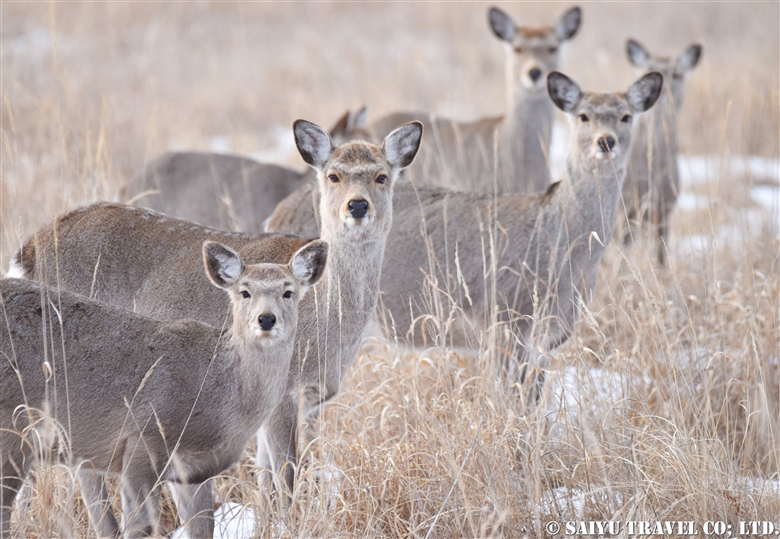
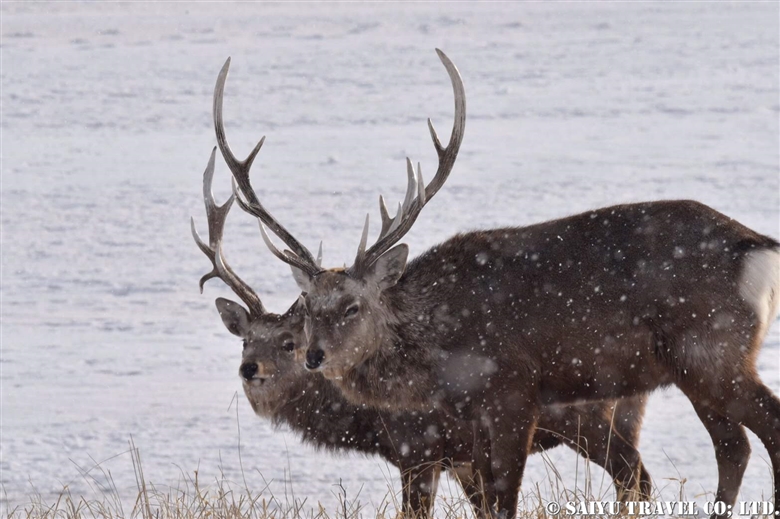
The Notsuke Peninsula is also designated as a wildlife sanctuary, so the Ezo sika deer are not weary of people, therefore close range photography is possible.
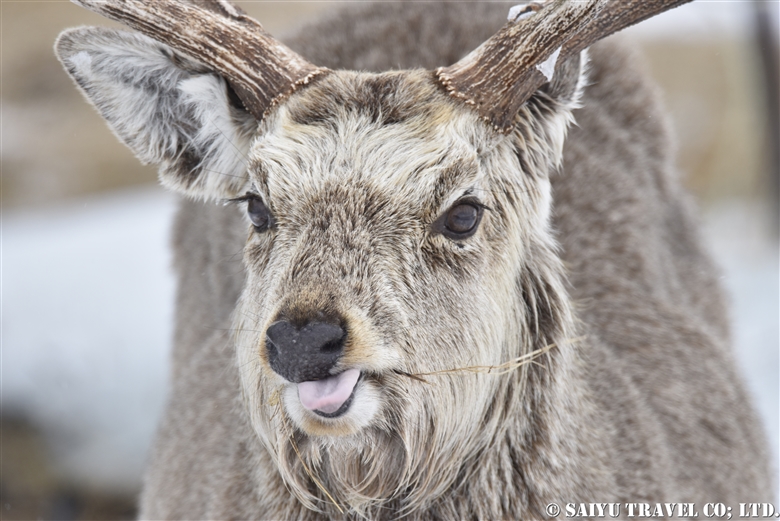
In addition, you can see the Shiretoko mountain range and Kunashir Island from the Notsuke Peninsula in good weather. If the visibility is good, you can also see the Akan volcanic complex and Mt. Kamui (also Mt. Mashu). The sun rises behind Kunashir in the morning and then sets on the frozen icy side in the evening, making it an attractive location for photography throughout the day.
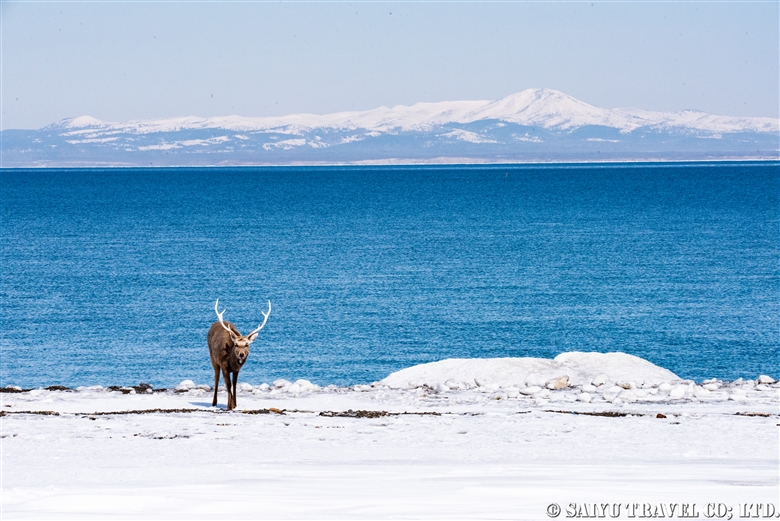
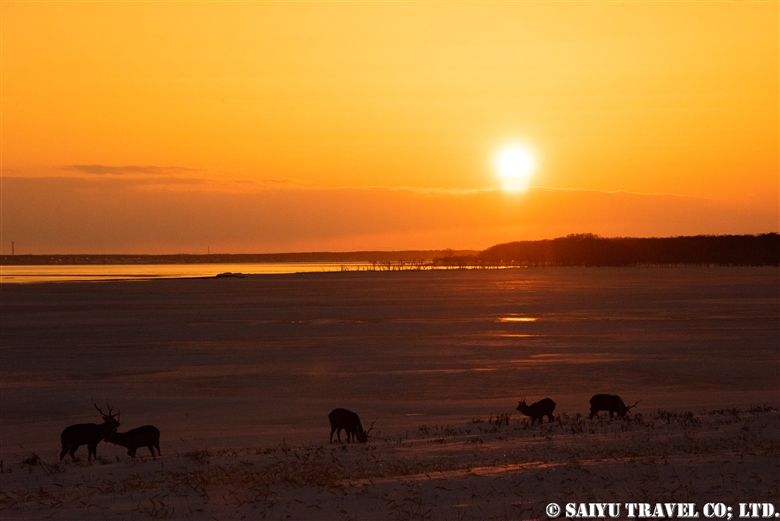
This is located only an hour (one-way) from Shiretoko, Rausu, so it is possible to visit on a day trip, perhaps after an early morning drift ice cruise.
Photo & text: Shohei MORITA (Shiretoko Serai)
*Contact us, Saiyu Travel for more information about wildlife and bird watching in Hokkaido. We can make various arrangements for your trip. We have a guesthouse, Shiretoko Serai, in Rausu, Shiretoko Peninsula.
Tags: Widlife in Japan, 知床サライ, Shohei Morita, Shiretoko Serai, Wildlife of Hokkaido, Wildlife in Hokkaido, Wildlife of Japan, エゾシカ, Wildlife Photography tour in Japan, Wildlife tour in Japan, Shohei Morita Photography, Ezo-shika-deer, Notsuke Peninsula, Hokkaido deer, Sika deer













